Heading back home to Canada for an extended period for the first time in years, I’ve been exploring my own backyard with a fresh set of eyes and unwavering enthusiasm. When Audrey and I sat down to decide which Canadian city we’d first like to visit it was a no-brainer – Montreal.
Montreal, aside from its world class festivals, historic districts and European flare, is important to us for a number of reasons. Firstly, this is where Audrey was born. Prior to moving to Argentina for grade school, she spent her formative years growing up in Montreal, Quebec. Secondly, Montreal was the first Canadian city that I traveled to on my own independently as a young adult. In many regards, my initial visit to Montreal as a young man helped ignite in me a true passion for travel.
With a full week to explore the city we hit the ground running and the following is a feature travel video, photo essay and travel guide showcasing the top 10 things to see and do in Montréal, Québec:
1. Visit the Museum of Fine Arts – Musée des beaux-arts de Montréal
Our first stop was the Montreal Museum of Fine Arts (MMFA) for a look at some of the current exhibitions. With over 13,000 square meters of exhibition space you’ll want to set aside a decent chunk of the day to explore its 40,000 plus permanent works. As the city’s largest museum, you’ll find it nestled on the historic Golden Square Mile section of Sherbroke Street.
Spread across five pavilions, each building boasts its own unique style, blending historic and modern designs seamlessly. The latest addition, the Pavilion for Peace, is a stunning example of contemporary architecture with its sleek lines and expansive glass windows.
One of the distinct aspects of the Museum of Fine Arts is its ever-changing roster of temporary exhibitions. These exhibitions often feature world-renowned artists and unique themes that draw visitors from around the globe. Whether it’s a retrospective of a famous painter or an exploration of a particular art movement, there’s always something new to see.
Tips for Visitors
- Guided Tours: Take advantage of the guided tours offered by the museum. These tours provide in-depth insights into the collections and exhibitions, enriching your visit.
- Explore the Surroundings: After your museum visit, take a stroll around the Golden Square Mile. The area is known for its historic buildings, upscale shops, and fine dining establishments.
- Check for Special Events: The museum frequently hosts special events, such as artist talks, film screenings, and live performances. Check the schedule and plan your visit to coincide with one of these events for an extra-special experience.
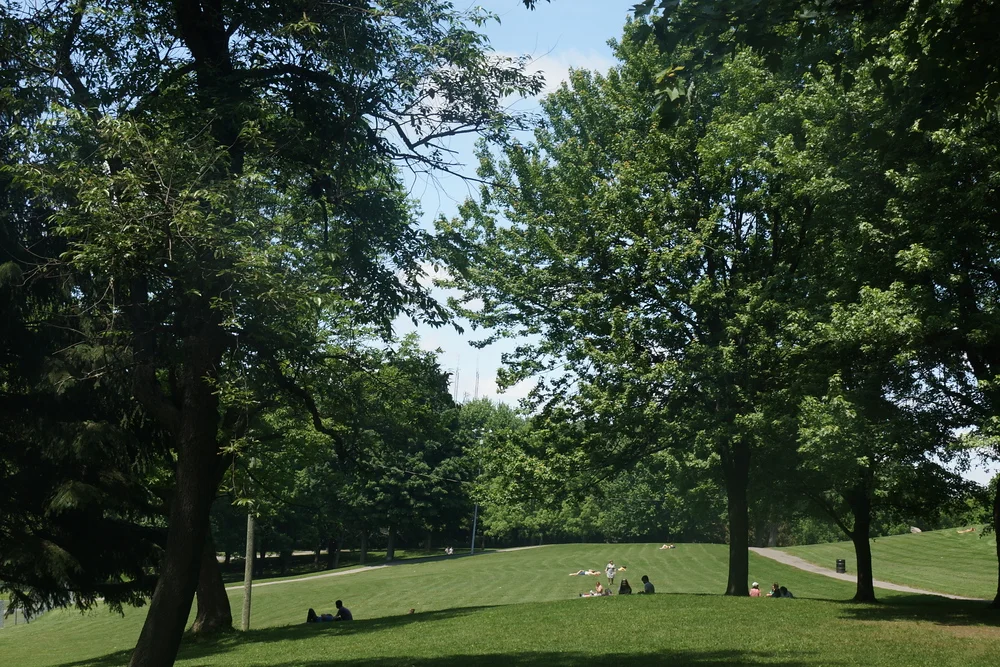
2. Hike up Mount Royal Park – Parc du Mont-Royal
After getting into an unhealthy routine of devouring Poutine nearly every other day, having the opportunity to hike up Mount Royal Park was a blessing. As one of Montreal’s largest green spaces you’ll find yourself strolling through forest paths, picnicking on large open fields and spotting wildlife such as squirrels and woodpeckers.
It you’ve been indulging in high calorie Montreal delights, spend a whole afternoon here burning it off without it feeling like cumbersome exercise. Popular, yet not too overcrowded, you’ll find yourself sharing spaces with tourists and locals alike.
Designed by the famous landscape architect Frederick Law Olmsted, you’ll find the Kondiaronk Belvedere, offering a panoramic view of Montreal’s skyline. It’s a picture-perfect spot to see the city in all its glory.
Mount Royal Park is a year-round destination. In the spring, the park bursts into bloom with wildflowers. Summer brings lush greenery and perfect picnic spots. Autumn transforms the park into a tapestry of vibrant fall colors, while winter turns it into a wonderland, perfect for snowshoeing and cross-country skiing.
The main entrances are at the George-Étienne Cartier Monument on Park Avenue and the Peel Street entrance near downtown.
Tips for Visitors
- Take Your Time: Don’t rush your hike. Take breaks to enjoy the scenery and snap photos.
- Dress Appropriately: The weather on Mount Royal can change quickly, so dress in layers and be prepared for sudden changes in temperature.
- Explore Beyond the Summit: While the Kondiaronk Belvedere is the main attraction, don’t miss other spots like Beaver Lake and the Smith House visitor center.
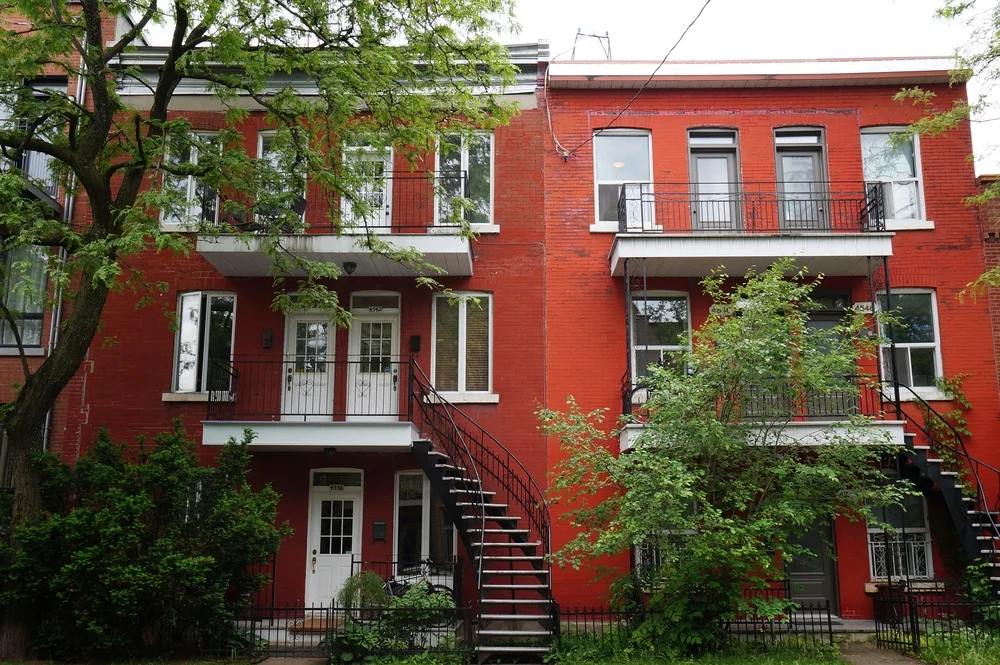
3.Check out Le Plateau Neighborhood – Le Plateau-Mont-Royal
We decided to stay in the neighborhood of Le Plateau-Mont-Royal and we couldn’t have hand picked a more ideal location in the city. With charming residential streets lined with spiral staircases you’re never far away from trendy restaurants and lively bars. Formerly a working class neighborhood, this hip section of Montreal is where you can find Schwartz’s Deli and many weekend street fairs during the summer months. If you’re not being greeted by friendly cats you’ll likely catch a festival en route to your nearest bus or metro station.
“The Plateau,” is one of Montreal’s most vibrant and eclectic neighborhoods. Known for its bohemian charm, colorful murals, and bustling street life, it offers a unique blend of culture, cuisine, and creativity. The streets are adorned with stunning murals and street art, transforming everyday walls into canvases of creativity.
A sub-neighborhood within Le Plateau, Mile End, is where the hip and trendy gather. It’s home to some of the city’s best coffee shops, vintage boutiques, and music venues. The cool, laid-back atmosphere here is palpable, making it the perfect spot to soak up some local culture. The nearest metro stations are Mont-Royal and Laurier on the Orange Line.
Tips for Visitors
- Visit in the Evening: To experience the full vibrancy of Le Plateau, visit in the late afternoon and stay into the evening. This way, you can enjoy the street life, dine at a local restaurant, and experience the nightlife.
- Check for Events: Le Plateau often hosts street fairs, festivals, and markets. Check local event listings to see if anything special is happening during your visit.
- Explore Side Streets: Some of the best finds in Le Plateau are off the beaten path. Wander down side streets and alleys to discover hidden gems and local secrets.
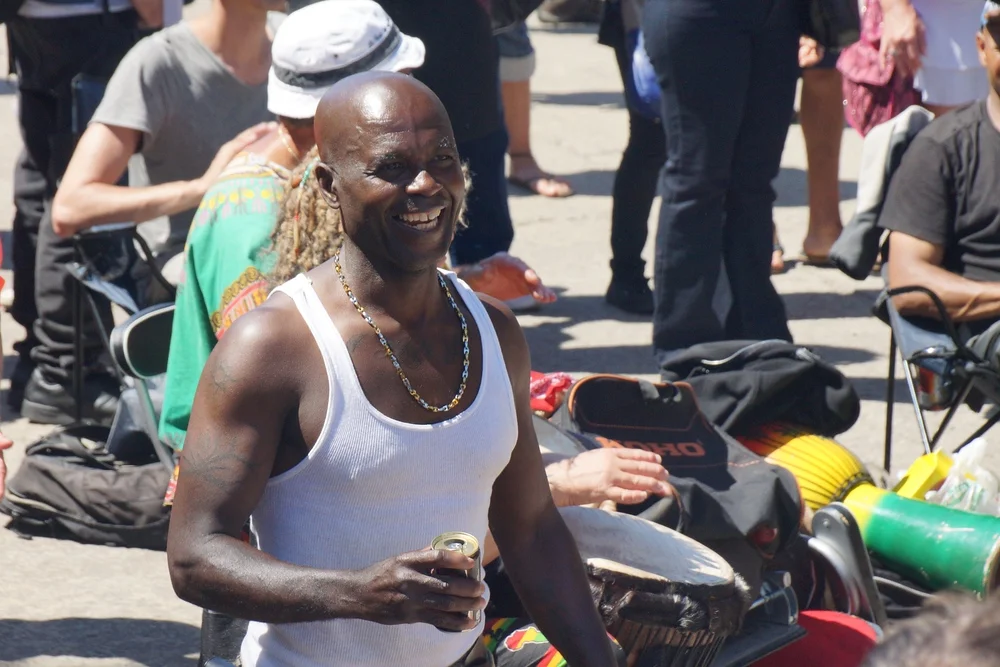
4. Tam Tams drumming on Sundays in Mount Royal Park – Les Tam-Tams du Mont Royal
There is something going in Montreal during any time of year; however, summertime is when the city buzzes its finest. On Sunday afternoons you’ll find a huge drumming circle (Tam-Tams) on the east end of Mount Royal. Drummers, by the thousands, converge along with dancers, visitors and vendors creating a lively and festive environment. From 1 pm until sunset, this spontaneous and non-sponsored event has been going on for years with a distinctly ‘laissez-faire’ attitude. I can’t think of a better way to spend your Sunday afternoon.
The event takes place near the George-Étienne Cartier Monument, which is a short walk from the Mont-Royal metro station. Arriving early gives you a chance to find a good spot and enjoy the whole day’s festivities. The event can get quite crowded, especially in the afternoon, so plan accordingly.
Tips for Visitors
- Be Respectful: Les Tam-Tams is a communal event, so be respectful of the space and the people around you. Clean up after yourself and be considerate of others.
- Stay Hydrated: It can get hot, especially in the summer, so bring plenty of water and stay hydrated.
- Get Involved: Don’t be shy—get up and dance, join the drum circle, or strike up a conversation with someone new. The more you participate, the richer your experience will be.
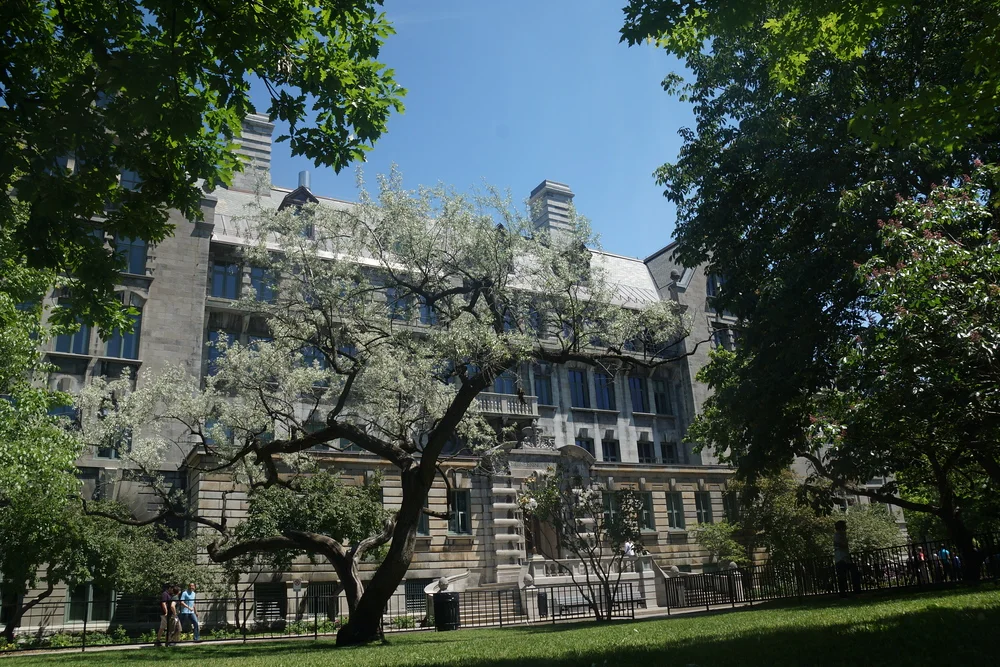
5. Wander around the campus area of McGill University – l’Université McGill
McGill University is one of Canada’s oldest and most prestigious universities. On a sunny day it is well worth your time wandering around campus to soak up the student atmosphere, enjoy a picnic, tan a little and/or toss around a Frisbee. I personally enjoyed all of the above aside from the tanning 😉
Founded in 1821, McGill University boasts a long and storied history. The campus is home to a diverse range of architectural styles, from Gothic Revival to modernist. Iconic buildings like the Arts Building, with its neoclassical design, and the Redpath Museum, a blend of Victorian and Romanesque styles, offer a visual feast.
The McGill metro station (on the Green Line) drops you off right at the edge of the campus. If you prefer biking, there are plenty of bike racks available.
Tips for Visitors
- Take a Guided Tour: McGill offers guided tours that provide deeper insights into the university’s history and architecture. Check their website for schedules.
- Visit the Museums: Don’t miss the Redpath Museum, which houses a fascinating collection of natural history and cultural artifacts.
- Check the Events Calendar: See if there are any public lectures, exhibitions, or performances happening during your visit.
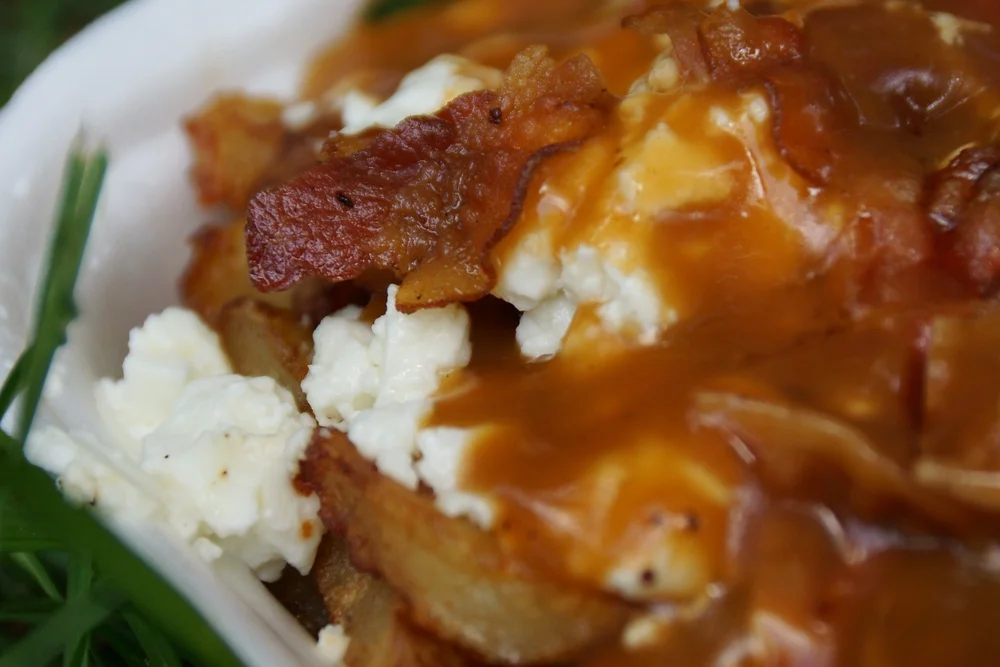
6.Eat poutine – cantines or casse-croûtes
There is one dish that you absolutely have to try when you come to Montreal and that is poutine. For those unacquainted, this French Canadian dish consists of a heap of french fries smothered in copious amounts of cheese curds and gravy. Thoroughly unhealthy in every regard, it is the kind of guilty pleasure dish that you’ll want to indulge in at least once while visiting Montreal.
Where to eat it? You’ll find greasy spoons across the city specializing in this dish; however, a few names that get frequently mentioned as ‘the best place to eat Poutine in the city’ include La Banquise and Poutineville.
I can personally vouch for La Banquise and if you want to deviate from the classic cheese curds and gravy I suggest substituting it with goat cheese and bacon. Oh my! Do plan on walking for hours on end to burn off the extra calories!
Tips for Visitors
- Try Different Variations: Don’t stick to just the classic. Explore the menu and try different toppings and styles.
- Combine with Other Local Foods: Pair your poutine with a Montreal bagel or smoked meat sandwich for a full Quebecois culinary experience.
- Enjoy the Atmosphere: Take your time to soak in the casual, friendly vibe of the cantine or casse-croûte. It’s as much about the experience as it is about the food.
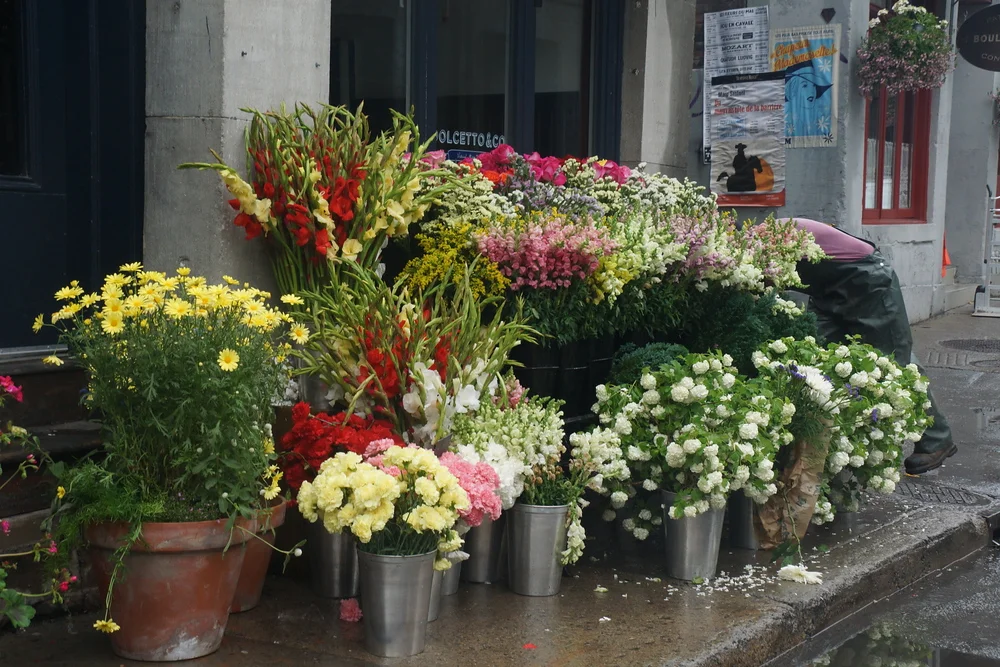
7.Visit the historic area of Old Montreal – Vieux-Montréal
For a taste of Old World French charm, wander down the cobbled streets of Old Montreal. It’ll feel like you’ve traveled back to France several centuries. With origins dating back to the 17th century, this is one of the oldest urban areas in all of North America.
There are lots of highly regarded – albeit overpriced – restaurants to try in this area. It’s touristy, yet if you limit yourself to window shopping you’ll snap some great photos while leaving with a fat wallet.
Founded in 1642, it’s one of the oldest urban areas in North America. From the impressive Notre-Dame Basilica to the ancient stone buildings, history is tangible here. The district showcases a variety of styles, from the grand Gothic Revival of the Notre-Dame Basilica to the classical lines of the Old Port.
Old Montreal offers some of the best views in the city. Stroll along the Old Port for a picturesque view of the St. Lawrence River, or take a ride on the Grande Roue de Montréal, a giant Ferris wheel that provides a panoramic view of the entire district.
Tips for Visitors
- Take a Guided Tour: To get the most out of your visit, consider joining a guided tour. Many tours offer fascinating insights into the history and architecture of Old Montreal.
- Enjoy the Local Cuisine: Don’t miss the chance to dine at one of the many excellent restaurants. From French bistros to modern eateries, the food scene here is top-notch.
- Explore the Old Port: Spend some time at the Old Port, where you can enjoy activities like boat tours, zip-lining, and ice skating in the winter.
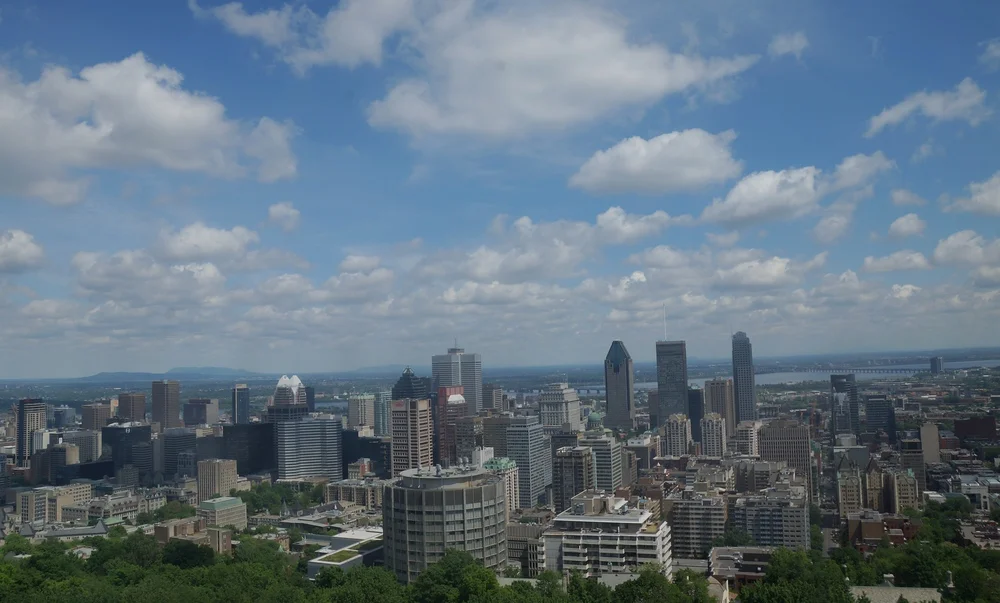
8. Lookout point from Mount Royal Park – Parc du Mont-Royal
One of the true joys of wandering around Mount Royal Park is the amazing lookout points. On a clear day you’ll feast your eyes on the city skyline, neighborhoods and Saint Lawrence River. Forget paying the typical city tourist trap of an expensive elevator ride to an observation deck. Instead, exercise your way up to the top and be rewarded for your efforts with these free views of the city.
Mount Royal Park, or Parc du Mont-Royal, is Montreal’s is a lush green space in the heart of the city. Designed by Frederick Law Olmsted, one of the architects of New York’s Central Park, this expansive park is a haven for nature lovers and a must-visit for anyone exploring Montreal.
The lookout point at Mount Royal Park provides one of the most stunning panoramic views of Montreal. From this vantage point, you can see the downtown skyline, the St. Lawrence River, and on a clear day, even the distant Adirondack Mountains in New York. It’s a picture-perfect spot that captures the city.
Mount Royal Park is a year-round destination. In the fall, the foliage transforms into a vibrant tapestry of reds, oranges, and yellows. Winter brings a blanket of snow, perfect for snowshoeing or tobogganing. Spring and summer are ideal for hiking, picnics, and enjoying the lush greenery.
Tips for Visitors
- Explore the Trails: Don’t just stick to the lookout point. The park has numerous trails that offer different perspectives and quieter spots to enjoy nature.
- Visit the Chalet: The Chalet du Mont-Royal near the lookout point is worth a visit. It offers additional views and a chance to learn more about the park’s history.
- Check for Events: Look out for any special events or activities happening in the park during your visit. Seasonal festivals and guided tours can enhance your experience.
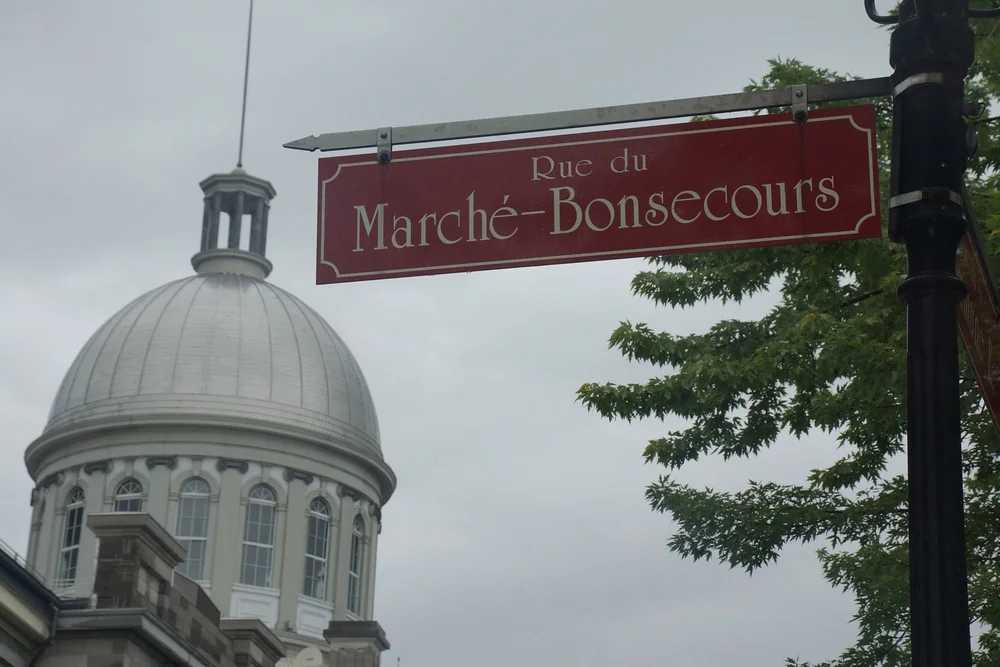
9.Go shopping at Bonsecours Market – Marché Bonsecours
For fine dining and shopping in trendy boutiques, you can pop into the Bonsecours Market. This two-story domed public market was at one time the main market in Montreal. This Palladian style building located at 350 re Saint-Paul, is where many will commence their walk along the cobbled streets of Old Montreal.
With its majestic dome and grand architecture, has been a central part of Montreal’s heritage for over 150 years. Built in the mid-19th century, the market has played various roles in Montreal’s history, from a public market to a city hall and even a concert hall. Bonsecours Market offers a diverse range of high-quality products, from unique Quebec-made crafts to fashionable apparel and jewelry.
The market is conveniently located in Old Montreal. You can reach the market by metro, with the closest stations being Champ-de-Mars and Place-d’Armes. Buses and taxis are also readily available. If you’re driving, there are several parking lots nearby.
Tips for Visitors
- Plan Ahead: Check the market’s website for information on current events and exhibitions. This can help you plan your visit around any special activities you might be interested in.
- Explore the Surroundings: Bonsecours Market is located in a picturesque part of Old Montreal. Take some time to explore the nearby historic sites, cafes, and shops.
- Interact with Artisans: Don’t hesitate to chat with the shop owners and artisans. They often have fascinating stories to share about their products and the market’s history.
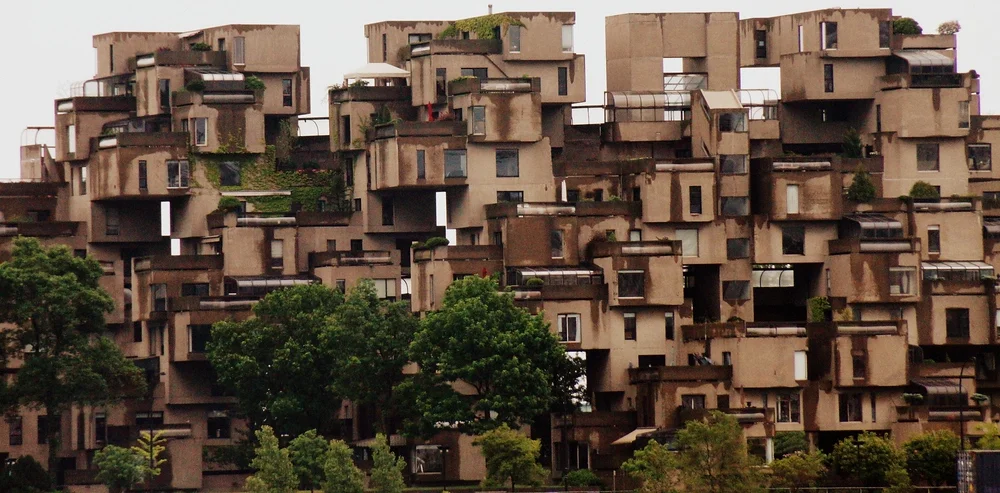
10. Habitat 67 – Habitat
Habitat 67 is a unique housing complex and one of the most interesting architectural landmarks in the city that is best viewed from across the Montreal Old Port or up close for those willing to cross the Saint Lawrence River. Designed by Israeli-Canadian architect Moshe Safdie as his Master’s Thesis, this building was completed in time for Expo 67 World’s Fair.
Many regard this building – known for its interlocking forms and connected walkways – as one of the most distinct architectural landmarks in all of Canada; however, it has also been given the accolade of being one of the top 10 ugliest buildings in all of North America by others.
It is a striking example of Brutalist architecture. Comprised of 354 identical prefabricated concrete units, the complex appears like a gigantic, three-dimensional puzzle. Each unit is positioned to offer privacy and outdoor space, resulting in a dynamic and sculptural form that’s unlike anything you’ve ever seen.
Habitat 67 is located on the Cité du Havre. You can take the metro to the Champ-de-Mars station, then catch a bus or taxi to the site.
Tips for Visitors
- Explore the Surroundings: After visiting Habitat 67, take some time to explore the surrounding area. The nearby Old Port of Montreal and the Lachine Canal offer additional scenic spots and activities.
- Respect Residents: Remember that Habitat 67 is a residential building. Be respectful of the people who live there by not trespassing or making excessive noise.
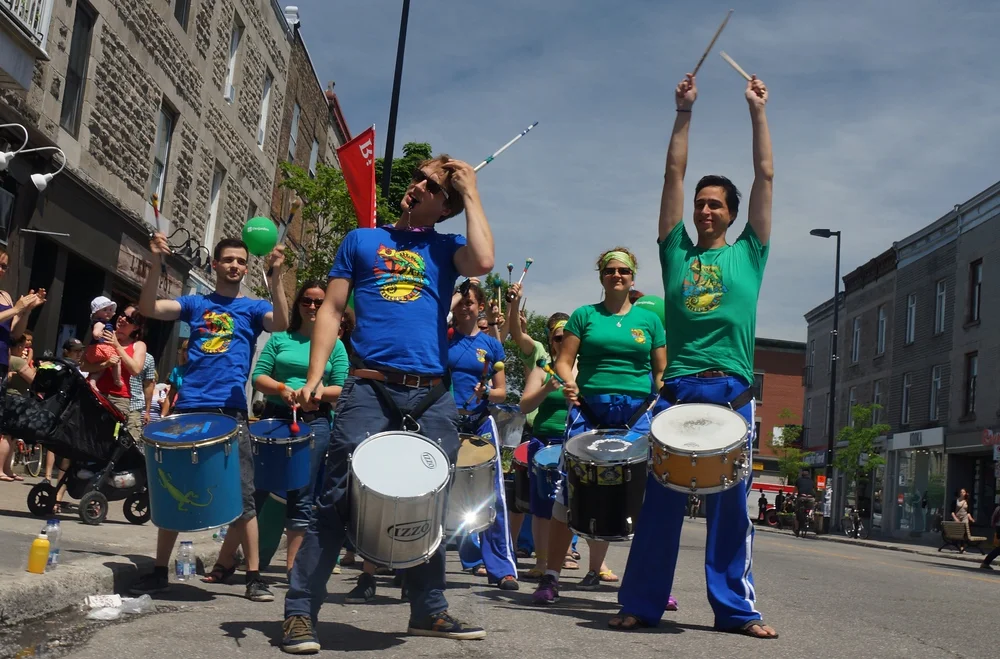
Have you been to Montreal?
Let us know what you love about this city in the comments below.
